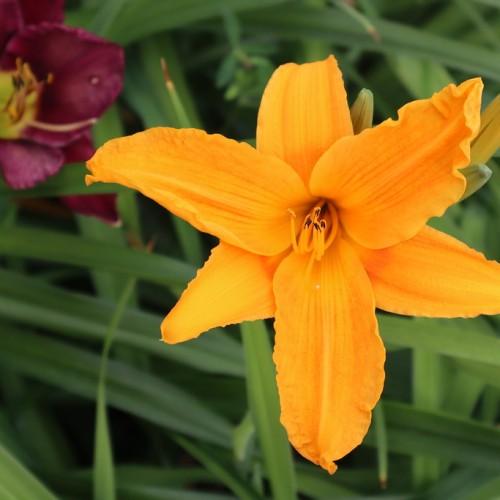
daylily
Hemerocallis 'Purple Pauper'
Cycle:
Herbaceous Perennial
Watering:
Average
Hardiness Zone:
3 - 8
Flowers:
Flowers In Spring
Sun:
Full sun,part shade
Leaf:
Yes
Growth Rate:
Low
Maintenance:
Low
Salt Tolerant:
Yes
Care Level:
Medium
watering
Water daylilies regularly but keep the soil slightly moist during the growing season. Water newly planted specimens once or twice a week, then reduce frequency to once a week. Mature plants can generally do with less frequent but more thorough watering. During extreme hot weather or drought, daylilies should be watered twice a week for optimal health.
sunlight
Daylily (Hemerocallis 'Purple Pauper') requires 6 to 8 hours of direct sunlight daily. This plant prefers full sun in well-drained soil, and thrives best when placed in an area that has direct access to light throughout the day. Daylilies will suffer in too much shade; therefore it is important to find a sunny spot with at least 8 hours of direct sunlight. During the summer months, when the days are longer, it is beneficial to increase the amount of light the daylily gets. During this time, the plant can be moved to a sunny location where it will receive 10 to 12 hours of sunshine to encourage stronger blooms. In the winter, however, when days tend to be shorter, the amount of sunlight should be reduced to approximately 5 to 8 hours a day to promote proper dormancy, as long as temperatures fall below 40° F (4° C). Wintertime temperatures below -18° F (-18° C) can damage the plant, so it is important to provide adequate protection during colder months.
pruning
Daylily (Hemerocallis 'Purple Pauper') should be pruned once a year in late summer or early fall. Start by removing any dead leaves or foliage, then lightly prune away any gangly plants or spent flower stalks. To improve vigor and flowering, cut any stems that are more than 3 years old down to ground level. Old flower buds not coming into bloom should be removed as well. Rejuvenation pruning can be done by cutting all of the stems back to 6 inches or so in late summer or early fall, which will promote vigorous new growth in the spring. After pruning, mulch around the plant and water deeply.
